It’s undeniable that Oda has been setting up Wano arc for a long time, starting all the way back being mentioned the first time back during the Thriller Bark arc (in 2007, chapter 450), and that this arc is one of the most well thought-out since the time skip.
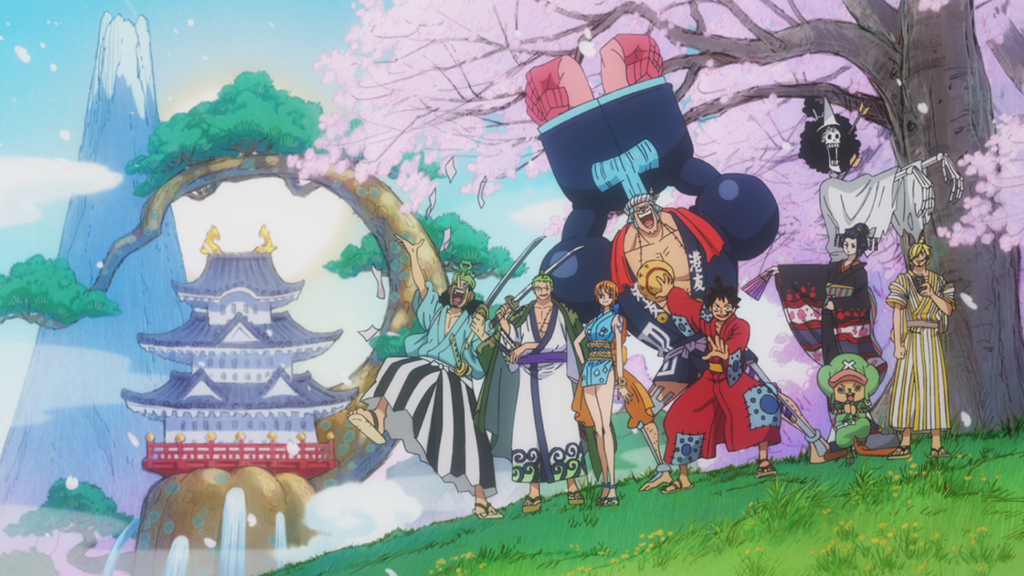
What I personally find masterful about this specific arc in the series is the level of detail that has been given to different elements of the setting. It’s quite easy to make up an “alternate version” of Japan just by taking few elements here and there and plotting them out basically changing the names of characters and places, but what Oda is doing here is quite different! He is weaving together taking from all Japan history and Japanese mythology together to make a world that “feels like Japan”, while being different enough to not being immediately recognizable… and what I found really astounding is the number of small references you could find here and there to facts and fictions.
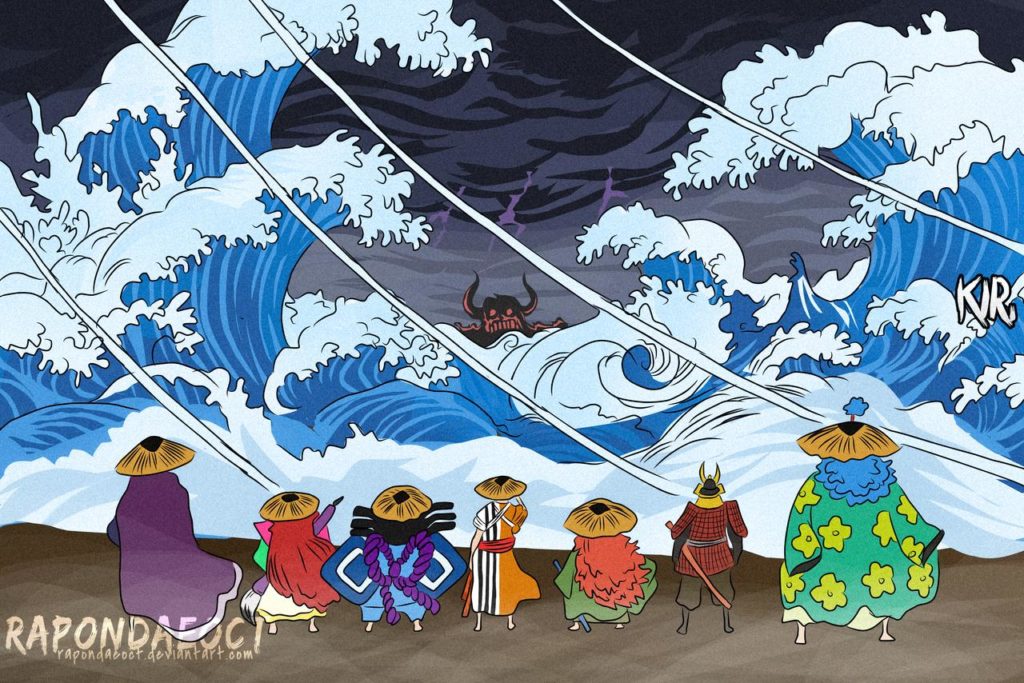
This post is intended as being both an appreciation post of the arc that’s going on right now and being as well a detailed analysis of the biggest historical and mythological sources present in the stories… and maybe, knowing what’s already there and what’s not it would be easier to plot out theories for the future of the Wano arc and what would happen next.
1. Momotarō (“The Peach Boy”)
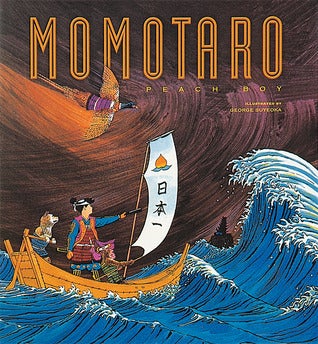
The history of Momotaro “The Peach Boy” has been a heavy source of inspiration for the conflict in between Kaido and Momonosuke.
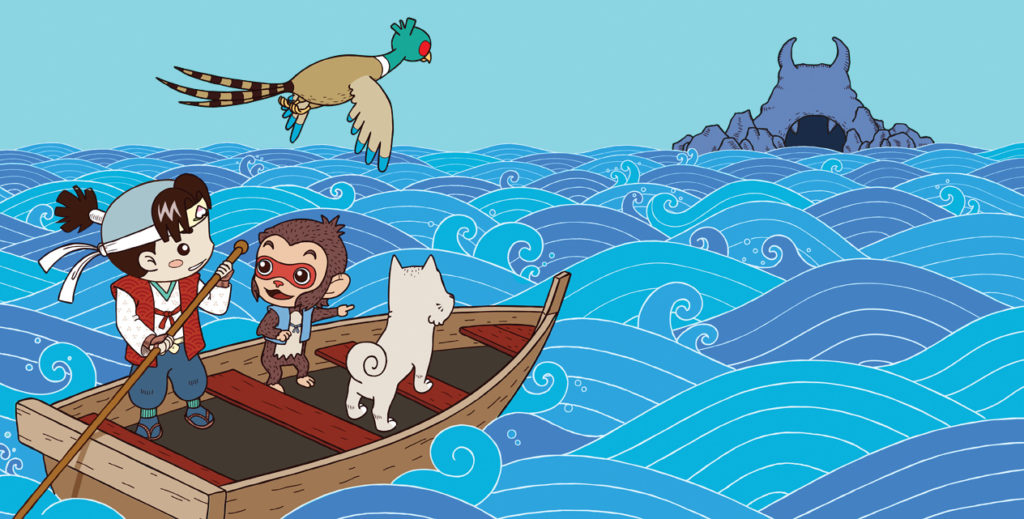
Once upon a time, in a small village, lived an old man and his wife. One day, the old woman saw a very big peach coming down the river. She picked it up and took it home. Later, when they cut the peach, a small boy came out of it. They named him Momotaro and, since they had no children, they raised him with love and care.
Momotaro grew up healthy and he become the strongest man in the village. When he heard that some oni living on the Onigashima island (“island of oni“) were terrorizing the nearby villages, he decided to go to drive them away. His old parents were worried, because an oni is a scary creature. Having a humanoid shape, thick red skin, powerful claws, horns and long, sharp teeth, the oni is huge, very strong and carries an iron club called kanabo. But Momotaro begged them to let him go, so the old woman prepared for him some kibidango (Japanese dumplings made from millet flour).
On his way, Momotaro met a dog who asked him where he was going and what he was carrying. So Momotaro told him that he was going to Onigashima, and that he was carrying the most delicious kibidango in all Japan. Then, the dog agreed to go with Momotaro and help him in exchange for the delicious kibidango. Later, the same thing happened with a pheasant and again with a monkey.
They all went to the island and because they ate those kibidango, the best in Japan, Momotaro’s party grew so strong that they easily vanquished the oni and made them promise that they will never attack the villagers again. Plus, Momotaro took all the treasures stolen by the oni and gave them back to the villagers…
The following are the recurring elements in the story:
| Mythic Element | One Piece Element | Chapter |
|---|---|---|
| Momotaro | Kozuki Momonosuke | chapter 685 |
| Onigashima | Onigashima | chapter 920 |
| King of the Oni | Kaido | chapter 818 |
| Kanabo | Kaido’s Mace | chapter 923 |
| Kibidango | O-Tama | chapter 911 |
| Talking Dog | Inuarashi | chapter 920 |
| Talking Monkey | Luffy | |
| Talking Pheasant | Marco? Kuzan? |
That’s kinda straightforward. I think that both Marco and Kuzan could be “the last possible ally for the alliance”, since they both could fall in the pheasant figure while being absent from the scene for far too much time.
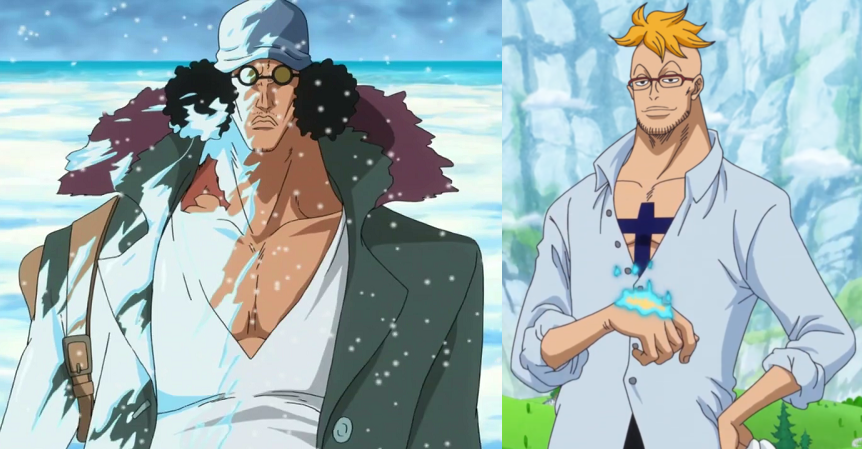
2. Yamata no Orochi (“Eight-Headed Giant Serpent”)
The history of the defeat of Yamata no Orochi has been a heavy source of inspiration for the conflict against Orochi and in his characterization as a character:
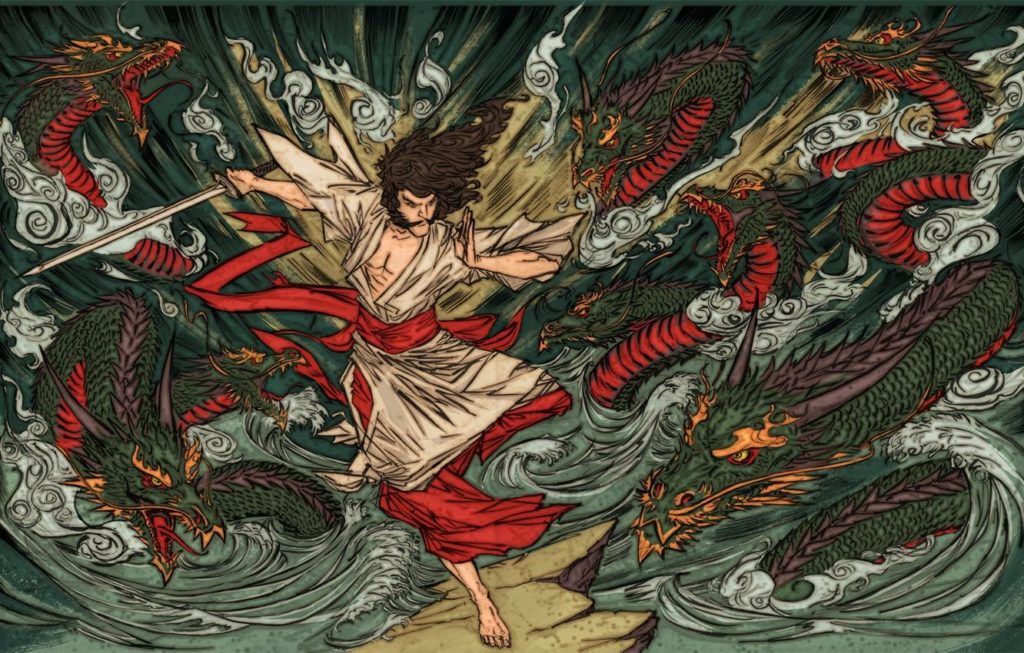
Yamata no Orochi is a serpent-dragon in Japanese myth. The Orochi has eight heads and eight tails, and its enormous body reaches across eight valleys and eight hills. (You’re probably noticing a pattern here.)
When Susano**o is in exile from the heavens, he finds a couple and their daughter crying by the river. They explain their sadness to him — that every year, the Orochi comes to devour one of their daughters. This year, they must give up their eigth and final daughter, Kushinada.
To save her, Susanoo proposes marriage to Kushinada. When she accepts, he transforms her into a comb which he can then carry in his hair. Kushinada’s parents must brew sake, he explains, and refine it eight times. They must also build an enclosure with eight gates, each of which includes a vat of sake.
When the Orochi arrives, he is lured in towards the sake, and dips each of his heads into one of the vats. The drunken beast is now weakened and disoriented, allowing Susanoo to quickly slay it.
As Susanoo cuts the monster into pieces, he uncovers a great sword that had grown inside the Orochi. This blade, the Kusanagi, is presented to Amaterasu as a gift to reconcile their dispute.
The following are the recurring elements in the story:
| Mythic Element | One Piece Element | Chapter |
|---|---|---|
| Yamata no Orochi | Kurozumi Orochi | chapter 932 |
| Susanoo | Zoro? Momo? | |
| Kushinada (with cumbs) | Kozuki Hiyori (adorned hairs) | chapter 928 |
| Kusanagi | Ame no Habakiri | chapter 954 |
In the original myth, Yamata no Orochi also asked for young females as sacrifices and Kushinada would have been the last one. Notice that in many sources Yamata no Orochi is described as being often drunk, trait that I think has been influenced the depiction/development of Kaido as a character. Also, it’s worth to notice that the Kusanagi blade is also named Ame no Habakiri, so the parallel here is striking.
3. Hyakki Yagyō (“Night Parade of One Hundred Demons”)
Hyakki Yagyo is a concept in Japanese folklore, where a parade composed of a hundred kinds of yōkai march through the streets of Japan at night.
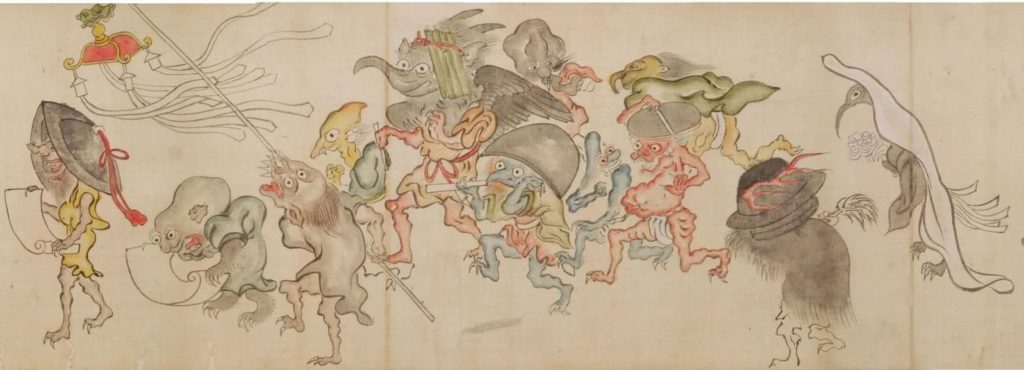
I think that this myth here has been split. Naturally the Beast Pirates has been inspired (in their monstrous form and in their numbers, also as a general visual identity for the Numbers) by the riot nature of the Hyakki Yakgyo, but the source story seems to me too much relevant in this specific situation.
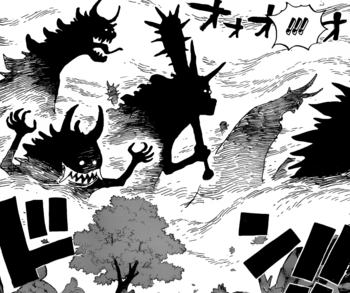
Sometimes an orderly procession, other times a riot, it refers to an uncontrolled horde of countless numbers of supernatural creatures known as oni and yōkai*, lead by Nurarihyon, a monster that cannot be caught. In some sources, that number is referred as being 500 demons.*
The story that originated the Hyakki Yagyo is: “A young nobleman is ordered to close up his house in Kyoto and move immediately to the new Imperial court in Fukuhara. Although while he’s gone a trusted servant stays behind to care for the house, when he returns, he finds the house infested with one hundred yōkai lke Oni*,* Tengu and others. All those demons were using his house to make a good party.”
Such story of the Hyakki Yagyo originated in a Shinto Fire Festival myth about the Kumano Mountains. It is said that, once a year, all the Shinto gods are supposed to meet on this mountain.
The following is speculation, but I feel it’s based:
| Mythic Element | One Piece Element | Chapter |
|---|---|---|
| Fire Festival | Fire Festival | chapter 958 |
| Trusted Servant/Nurarhyon | Kyoshiro/Ushimitsu Kozo | chapter 973 |
| Young Noblemen | Kurozumi Orochi | chapter 958 |
| Procession | Samurai Prisoners | chapter 955 |
My interpretation of such a myth is that we will see a procession of freed peasant Samurai coming from the Flower Capital, marching during the Fire Festival, guided by Denjiro, who was trusted by Kurozumi Orochi (…and that was his plan all along).
4. Benkei and Yoshitsune
This was the myth surrounding two historical figures in Japan, Minamoto Yoshitsune (on the right) and Benkei (on the left). Naturally those two spawned the whole Ringo region story, being the source material for Onimaru and the Shimotsuki clan.
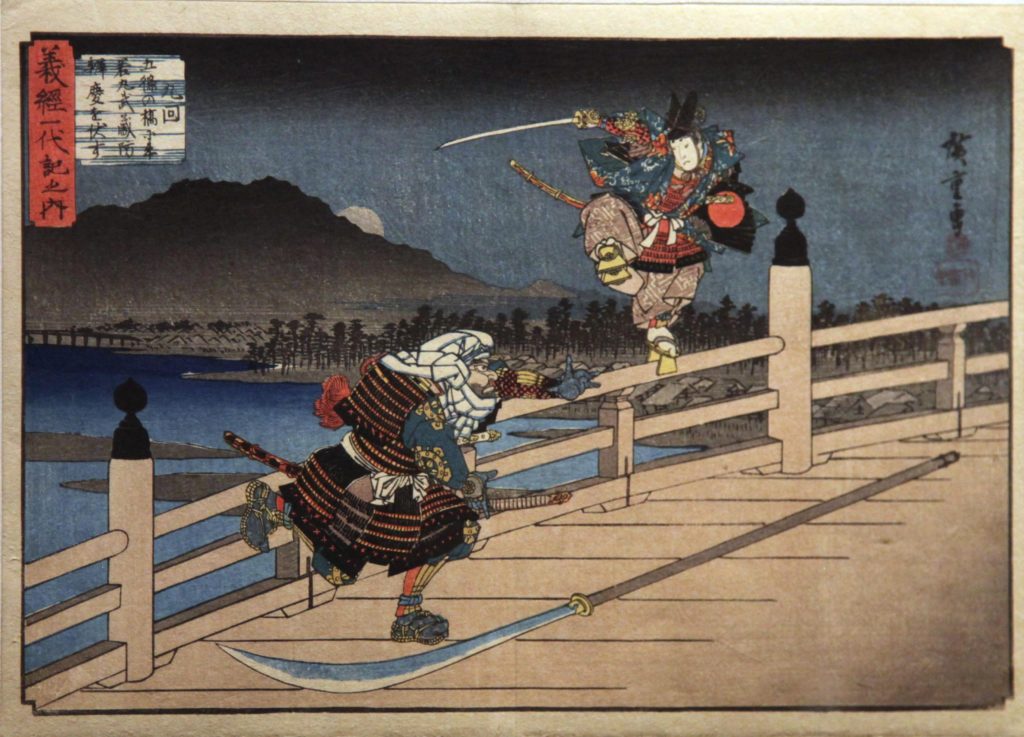
Benkei was a warrior monk who lived in Japan in the twelfth century. Though most of the stories associated with him are exaggerated to the stature of myth and legend, he was undoubtedly a real person.
Minamoto Yoshitsune is one of the best-loved historical figures in Japan. He was a brilliant warrior who lived from 1159 to 1189. He helped his older brother Yoritomo gain control of Japan. Later, Yoritomo established the first shogunate in Japan.
Yoshitsune’s father, Minamoto Yoshihomo was killed by his enemy Taira Kiyomori in 1160, when Yoshitsune was less than a year old. Kiyomori spared Yoshitsune, but put him in a monastery in Kyoto. Here, Yoshitsune trained to become a Buddhist monk.
Legend says that it was near this monastery, on the Goyo Bridge in Kyoto, that Yoshitsune met Benkei. A popular version of the story maintains that Benkei would hide by night under the Goyo bridge, and challenge all who passed to a swordfight. He would keep the swords of those he defeated. In this way Benkei had collected 999 swords and was in search of the one-thousandth sword when he encountered Yoshitsune.
Yoshitsune and Benkei remain among Japan’s best-loved heroes. Their adventures have given birth to a host of myths, legends and stories, while incidents from their lives often form the theme of Kabuki plays and Noh performances.
The following are the recurring elements in the story:
| Mythic Element | One Piece Element | Chapter |
|---|---|---|
| Benkei | Gyukimaru/Onimaru | chapter 936 |
| 999 Swords | Underground Chamber | chapter 953 |
| Goyo Bridge | Oihagi Bridge | |
| Minamoto Yoshitsune | Ushimaru Shimotsuki | chapter 953 |
It’s worth to notice that historically Minamoto Yoshitsune was killed due to betrayal (in the same way it happens to Ushimaru in the series). It’s very interesting to notice that the Zoro Shimotsuki theory here is heavily supported by having many sources about a potential surviving son fathered by Yoshitsune with his mistress Shizuka, who fled the castle while carrying is unborn child… not a fan of the theory, but it still starts to have more legs now.
5. Shimabara Rebellion
The Shimabara Rebellion was the largest civil conflict in Japan during the Edo period, and was one of only a handful of instances of serious unrest during the relatively peaceful period of the Tokugawa shogunate’s rule.
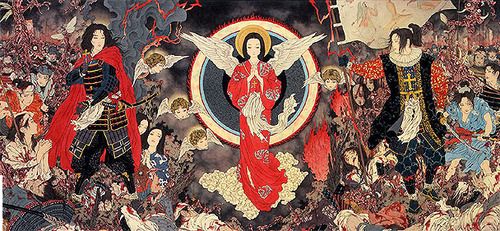
The Shimabara Rebellion was a Catholic peasant uprising in Japan that occurred from 1637 to 1638. The rebellion occurred in reaction to tax increases and the persecution of Christians by the Tokugawa Shogunate, and the Tokugawa sent 125,000 troops to suppress the rebels at Hara Castle. In the wake of the rebellion, the prohibition of Christianity was strictly enforced, and Japan’s isolationism was tightened and the official persecution of Christians continued until the 1850s. Some interesting elements are the fact that the Rebellion grew around the Hara castle (which was a dismantled castle), the fact that Myamoto Musashi fought with the besieging forces as well as the Koga ninja and that the rebels were ultimately defeated. Emosaku Yamada is believed to have been a traitor from the Tokugawa shogunate.
| Historic Element | One Piece Element | Chapter |
|---|---|---|
| Tokugawa Shogunate | Kurozumi Shogunate | |
| Shimabara Rebels | Ninja-Pirate-Mink Alliance | chapter 920 |
| Hara Castle | Ruins of Odens Castle | chapter 919 |
| Koga Ninja | Orochi Oniwabanshu | chapter 931 |
| Emosaku Yamada (traitor) | Kurozumi Kanjuro (traitor) | chapter 974 |
| Miyamoto Musashi | ?? |
It’s important to notice that the Kurozumi Shogunate is realistically associated with the Tokugawa Shogunate, since the period in which Japan was under tight isolationism was during the Tokugawa Shogunate. The most notorious person who was fighting under the Tokugawa Shogunate at the time was Miyamoto Musashi, known as being historically “one of the strongest swordsman in history”. Is there somebody else (possibly a dual-wielding samurai) we still don’t know who could represent such a strong samurai? Maybe the Mimawarigumi’s captain?
6. Tokugawa Shogunate
The Tokugawa Shogunate was a shogunate led by the Tokugawa clan from 1603 to 1868, reigning for exactly 265 years. In this case, being the Tokugawa Shogunate similar to the Kurozumi Shogunate in portrayal, some of the elements have been kept, mixed and then used for the story.
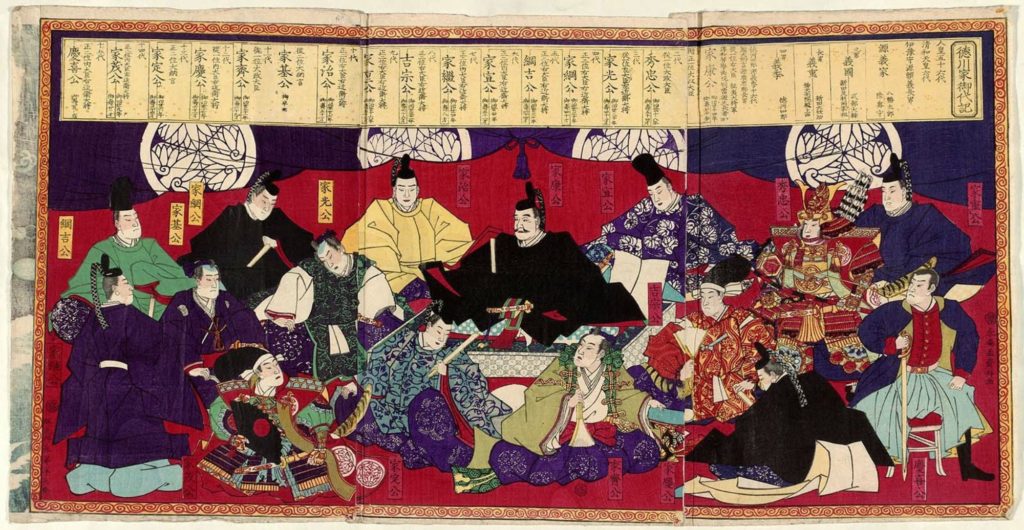
- Sakoku policy (“Closed Country”)
Sakoku was the isolationist foreign policy of the Japanese Tokugawa shogunate under which, for a period of over 220 years, relations and trade between Japan and other countries were severely limited, nearly all foreign nationals were barred from entering Japan and common Japanese people were kept from leaving the country.
Japan was not completely isolated under the sakoku policy. It was a system in which strict regulations were applied to commerce and foreign relations by the shogunate and by certain feudal domains. There was extensive trade with China through the port of Nagasaki, in the far west of Japan, with a residential area for the Chinese.
- Mimawarigumi (“Special Force Police”)
Sakoku was the isolationist foreign policy of the Japanese Tokugawa shogunate under which, for a period of over 220 years, relations and trade between Japan and other countries were severely limited, nearly all foreign nationals were barred from entering Japan and common Japanese people were kept from leaving the country.
- Katanagari (“Sword Hunt”)
Several times in Japanese history, the new ruler sought to ensure his position by calling a sword hunt (刀狩, katanagari). Armies would scour the entire country, confiscating the weapons of the enemies of the new regime. In this manner, the new ruler sought to ensure that no one could take the country by force as he had just done.
| Historic Element | One Piece Element | Chapter |
|---|---|---|
| Sakoku Policy | Isolationism | chapter 919 |
| Kyoto Mimawarigumi | Mimawarigumi | chapter 951 |
| Sword Hunt | chapter 926 |
One of the most important historical element that’s still missing is the event of the Kurofune or “Black Ships”, that coincided with the arrival of Westerner vessels entering the Edo Bay and that was the whole reason for Japan opening their borders (in real history). I personally take this historic event as a possible hint of the arrival of Blackbeard right at the end of Wano for him to force the island to open their borders by gunboat diplomacy (and take a new fruit or a road poneglyph? Who knows, really).
7. Akō incident or Forty-seven Ronin
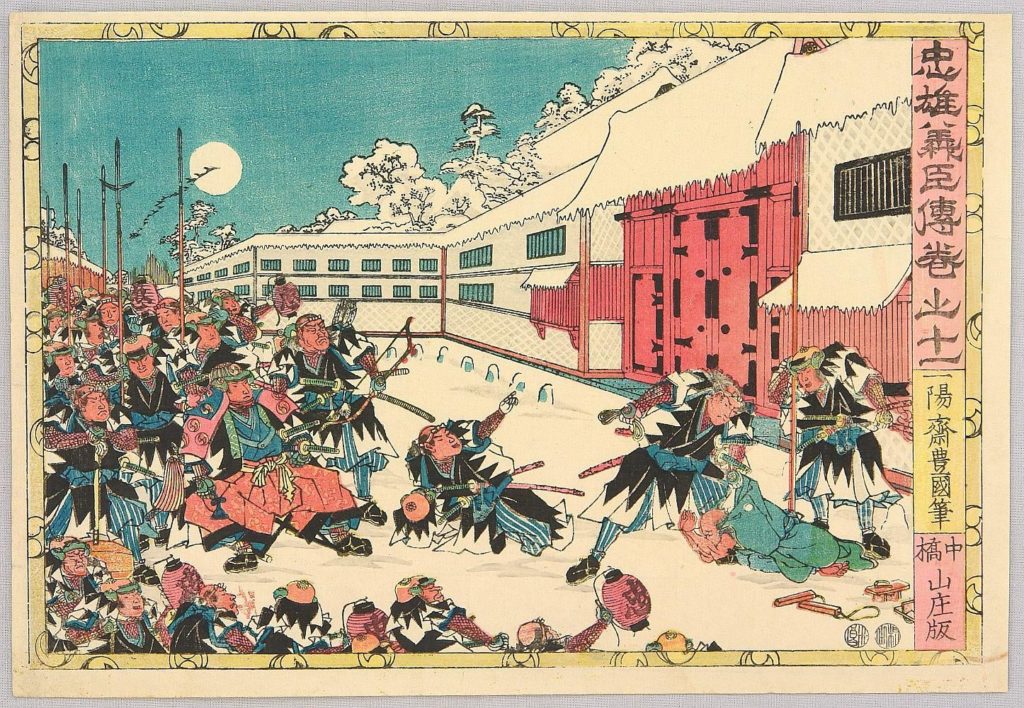
The revenge of the forty-seven rōnin, also known as the Akō incident is an 18th-century historical event in Japan in which a band of rōnin (leaderless samurai) avenged the death of their master. It could be pointed at being one of the sources of inspiration for the Nine Red Scabbards.
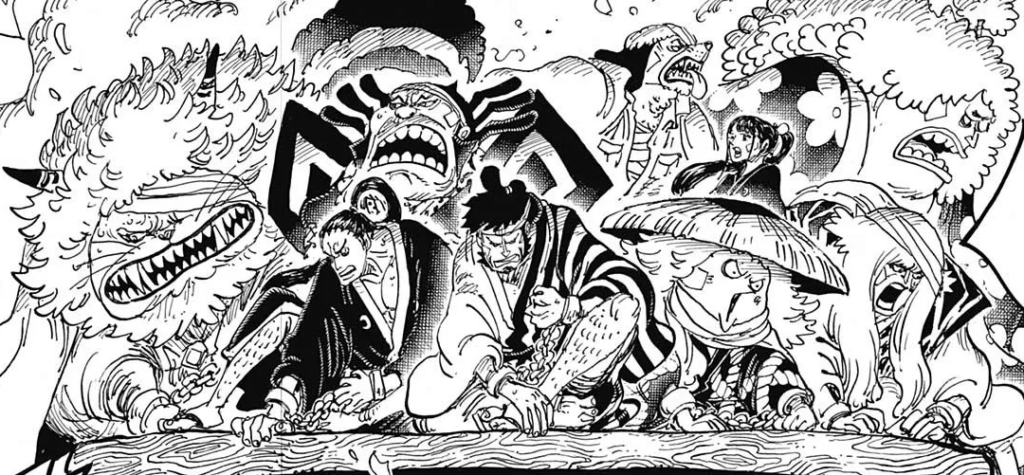
The story is a detailed revenge mission that was taken after years and years of the death of their lord, so it’s very simple to make some connections here. I still think there is a little bit more behind some of the Scabbards, at least for their names, roles and/or other details.
1.Oden – Oden seems to be partially inspired by Oda Nobunaga, whose name is very similar, (being the very last noble before the Tokugawa shogunate, having a bad attitude/fame and having his castle burned down to ash) and Goemon Ishikawa.
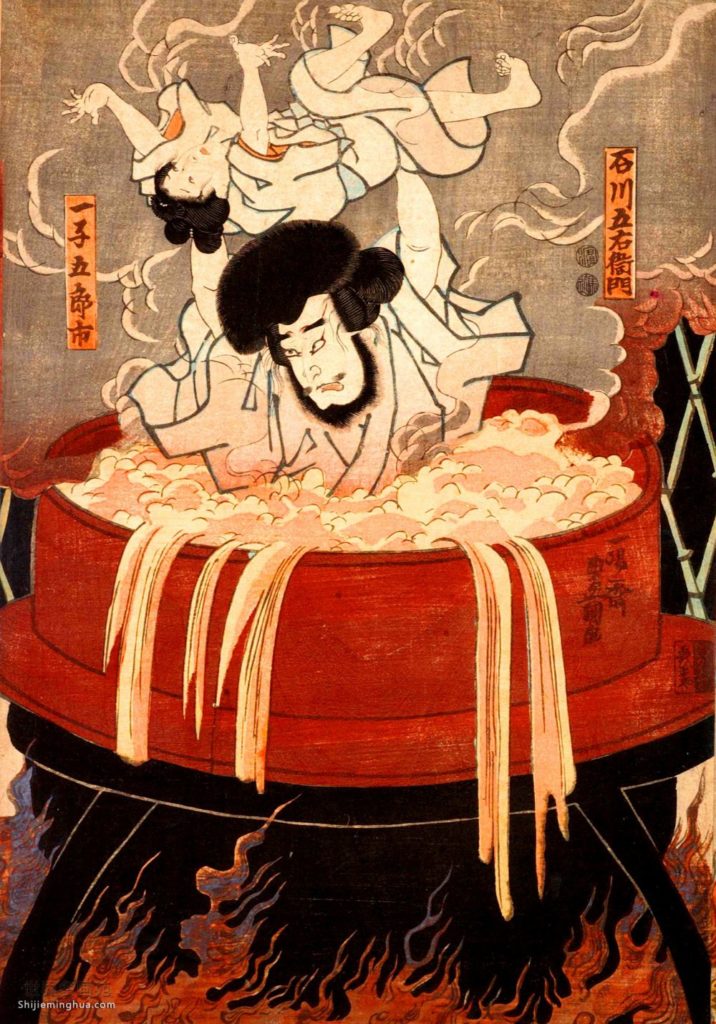
2.Kinemon – A different rebellion against the Tokugawa Shogunate was the Kinmon Incident;
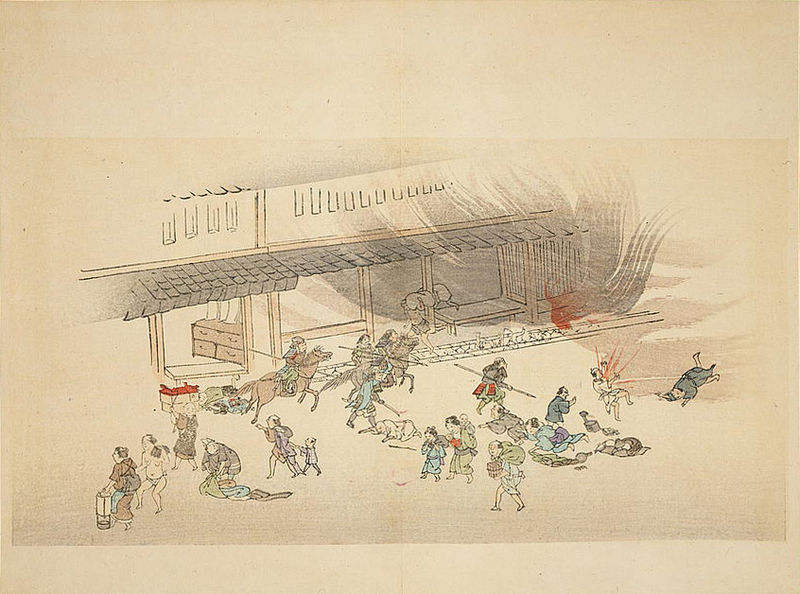
3.Kanjuro – Emosaku Yamada.
4.Raizo? – Possibly a reference to Hanzo, a famous Ninja of the Iga clan (not from Koga)?
5.Ashura Doji/Shutenmaru – Named after the eponymous creature Shuten-Doji.
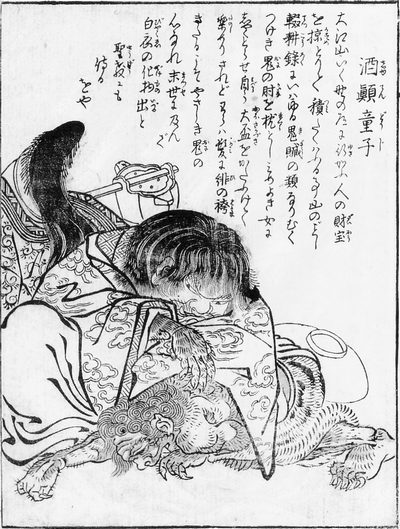
6.Kawamatsu – Inspired from the myth of Urashima Taro, which was a fisherman who saved a small turtle on the beach which was tortured by a lot of evil people… and Kawamatsu was exactly that tortle. It’s relevant to notice that the rest of the whole plot for that myth has become already Fishman Island.
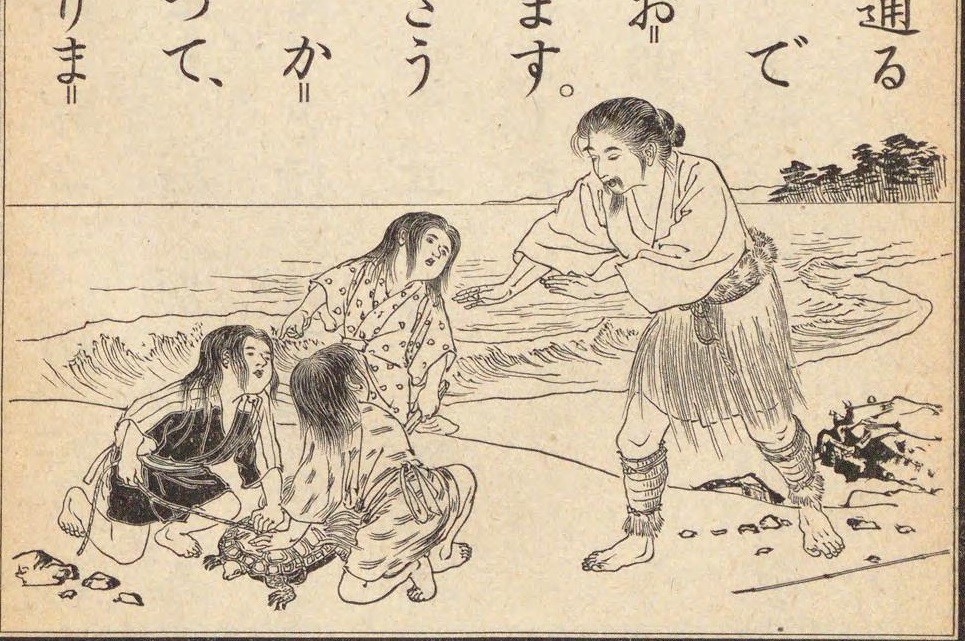
7.Denjiro – Nurarihyon.
I don’t have any clues about O-Kiku/Shinobu/Izo, but I guess that only time will tell.
*Theory by Scicageki
